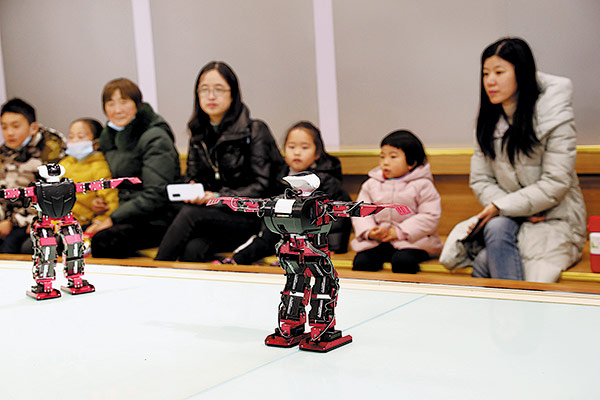Lvwo Technology collects cards all day long, providing a higher than the market competitiveness exchange rate and a reliable cooperation platform. Welcome all card merchants to negotiate and cooperate。
Keyword: moneylion 5104, stable 5392, business card 555740, 5396 onebank , 4985 chime, 4115 current , 4358netspend, 41088 Karma ....
Please identify official WeChat: lvwocfo only this wechat, the others are counterfeit, be careful to choose!

Museums are gaining popularity among families, as Chinese parents find they help to inspire curiosity in their children.
Zhu Hui, a resident of Taicang, Jiangsu province, took her 13-year-old son to Suzhou Museum and Taicang Museum, and took her 6-year-old daughter to Zhouzhuang Mystery of Life Museum.
"The museum is a landmark site for Suzhou culture, as so many cultural relics are in surroundings such as the Humble Administrator's Garden and the Lion Forest Garden," Zhu said. "For middle-school students, the place is a great choice for them to learn about politics, history and geography at one time."
Experiencing ancient architecture halls, the magnificent works of architectural masters and hometown history is far more useful than any online classes, Zhu added.
With the "double reduction" policy relieving students from excessive homework and banning them from after-school private tutoring, combined with the pandemic prevention and control measures in the wake of COVID-19, museums in Suzhou have had increased visits.
Suzhou Museum West alone received 53,000 visits during the weeklong National Day holiday in October, of which family visits accounted for more than 70 percent. Zhouzhuang Mystery of Life Museum received more than 10,000 tourists, with children accounting for 60 percent.
"The 'double reduction' is reshaping social and educational needs," said Zhang Jianjun, curator of the Memorial Hall of the Victims in Nanjing Massacre by Japanese Invaders.
Due to the homework-easing policy, schools are keen to provide a rich and colorful social education. In this regard, museums should work together with education departments and schools to provide regular courses or activities for culture and history experiences, Zhang said.
Besides education value, museums are playing a more important role in a tourism market that is increasingly featuring the fusion of culture and tourism.
According to data from travel booking platform Ctrip, museum visitors cover all age groups. But post-1980s and post-1990s parents are becoming the majority.
With improvements in people's livelihoods and the evolution of educational ideas, more parents are hoping to broaden their children's horizons through visiting museums, said Zhai Xiangkun, deputy head of the culture and tourism policy center at China University of Labor Relations.
"Science and technology exhibitions are one of the main services a museum can offer," said Gao Yang, an assistant professor from Tsinghua University.
Visiting scientific and technological museums is conducive to stimulating children's interest in science and technology, culture and related disciplines, and cultivates hobbies, which is of great significance to their growth, Gao said.
Museum tourism is entering the fast lane for development, but how to integrate museum resources and the tourism market involves careful management among different departments.
On Sept 30, 2020, the Ministry of Education and the National Cultural Heritage Administration, jointly issued a policy on using museum resources to carry out education and teaching activities for primary and middle-school students.
The policy addressed the significance of "the organic combination" of museum visits and school education. It called for cooperation among local educational departments, primary and secondary schools and museums to provide high-quality after-school services.
The role of public education has become a key priority to improve a museum's national rating, which urges the museums to invest more in attracting children, officials said.
Data show that between 2016-20, a new museum was opened every two days on average in China. The annual number of museum visits grew from 700 million to 1.2 billion during the same period.

 大熊日志
大熊日志




